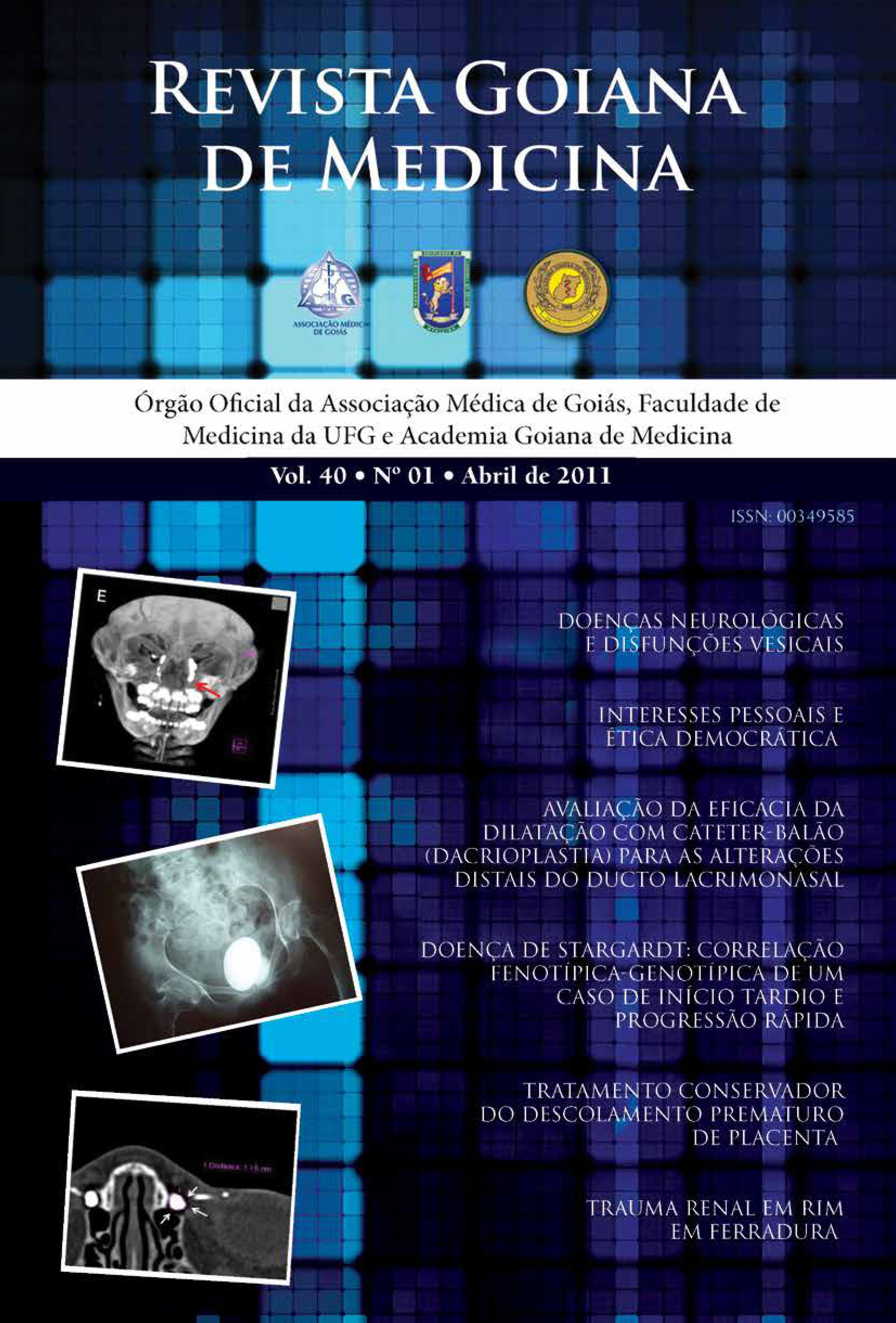Evaluating the effectiveness of balloon catheter dilation (dacrioplastia) to the changes of the distal nasolacrimal duct
Keywords:
lacrimal duct obstruction/congenital, balloon dilatation, radiologyAbstract
The most common etiology for congenital epiphora is the obstruction of the lacrimonasal duct. The congenital obstruction of the lacrimonasal duct (CLNDO) is the most frequent abnormality of the lacrimal sac of the child and its incidence varies from 1.8% to 20% according to some authors. The goal of this study was to evaluate the effectiveness of the technique of lacrimonasal duct dilatation using balloon-catheter for treatment of CLNDO in children between two and six years old. Besides, evaluate the anatomical findings of lower lacrimal system of children with CLNDO using multi-detectors computed tomography dacryocystography (MD-CT-DCG) with three dimension (3D) reconstruction, before and after the balloon-catheter dilatation. This was a prospective interventional case series study, which was performed with children treated at Centro de Referência em Oftalmologia (Cerof)/ Universidade Federal de Goiás, with diagnosis of CLNDO. The cases were selected consecutively accordingly with the demand of the service. Third eight lacrimal systems of 29 children with CLNDO were included and treated with balloon-catheter dilatation. Age varied between 24 and 64 months with average age of 38.13 ± 11.26 months. Among the 38 lacrimal systems treated, 33 had complete resolution of the signs and symptoms of epiphora (success rate of 86.84%). Radiological study of the last 18 operated lacrimal systems was performed before and five minutes after balloon-catheter dacrioplasty. The circumference of the largest portion of lacrimal system, measured before the procedure, varied from 0.64 to 2cm with an average of 1.30 ± 0.45cm. The amount of contrast prior procedure varied from 0.01 to 0.38cm3, with an average of 0.12 ± 0.08cm3. The amount of contrast after procedure varied from 0.01to 0.20cm3, with an average of 0.07 ± 0.06cm3. There was a statistically significant difference (p = 0.01) when comparing the contrast volume before and after the procedure. In conclusion, the balloon-catheter dilatation was proved to be effective as the first procedure in the vast majority of children with CLNDO. The technique of MD-CT-DCG-3D provides detailed information about the anatomy of the lacrimal system, including the lacrimal flow immediately after the dilatation. The difference in the amount of contrast before and after (p = 0.04) and the largest portion of lacrimal sac (p = 0.01) were the only variables determining for the success of the procedure.
Downloads
Published
Issue
Section
License
Copyright (c) 2011 Goiana Journal of Medicine

This work is licensed under a Creative Commons Attribution 4.0 International License.



